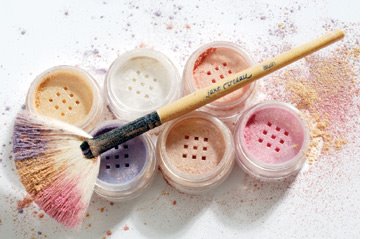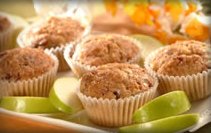The key to controlling your weight is controlling your hunger – and now a new study sheds light on a natural food ingredient that can help you do just that ! - By Colette Bouchez
 As anyone who's ever tried to diet can tell you, the key to losing weight is not controlling what you eat – it's controlling your desire to eat it!
As anyone who's ever tried to diet can tell you, the key to losing weight is not controlling what you eat – it's controlling your desire to eat it! I'm talking about appetite – and how the ability to control your hunger pangs and the desire to quench them is key to weight control.
But if a new study just published in the American Journal of Clinical Nutrition is right, that key is about to open a headlock on obesity – and doing so may require nothing more than adding a specific type high fiber sweetener to your diet.
That ingredient say experts, is oligofructose. Not to be confused with fructose or fruit sugar, oligofructose is a slightly sweet plant fiber, that appears to suppress levels of a hormone that actually controls our desire to eat!
Moreover, oligofructose also functions as a probiotic – a type of healthy bacteria that's been shown to have a positive impact on intestinal health - plus it may also help regulate blood sugar, another plus in controlling your appetite.
“Independent of other lifestyle changes, oligofructose supplementation has the potential to promote weight loss and improve glucose regulation in overweight adults,” write researchers Jill Parnell and Raylene Reimer who conducted the research at the University of Calgary in Canada.
Parnell and Reimer also report that foods high in this probiotic fiber not only help reduce levels of ghrelin, a hormone linked to appetite control, but they also increase levels of a peptide hormone known as PYY – which is the natural compound involved in chemically signaling the brain that we have reached our satiation point and we don't need to eat any more.
Conversely, many researchers believe that when ghrelin levels rise and PYY levels fall , it becomes nearly impossible to feel full or control our appetite – not to mention stay on a diet.
A Sweet Way To Lose Weight
The 12 week study involved 48 overweight or obese adults with no other known health issues. Each member of the group was weighed and then randomly assigned to receive either a daily dose of 21 grams of oligofructose, or a placebo. They were then told to eat as they normally would. At the end of the 12 weeks, each member of the group was weighed again.
The result: Those who were taking the oligofructose lost an average of 1.02 kg of weight, while the placebo group gained an average of .45 kg. Moreover , testing showed that while the supplement was able to suppress production of ghrelin ( which helped control appetite), as well as increase levels of PPY( the signal that tells the brain we are full), other hormones involved in the satiation response were not affected.
That said, the researchers report it became clear that the oligofructose was controlling appetite since everyone in the group using the supplement reported a decrease in the desire to eat – and noted they felt fuller on less food. Moreover, no one in the group taking the supplement reported any adverse effects.
Oligofructose is closely related to another plant fiber known as inulin and previous studies have shown that both can be beneficial in reducing body mass index (BMI) while controlling appetite. The research conducted by Parnell and Reimer was among the first human studies to demonstrate the ability of oligofructose to have a direct impact on the body chemistry linked to overeating.
Both oligofructose and inulin can be found in a number of yogursts, and some fruit juices. Oligofructose is also available as a sweetening ingredient and can be found in in some low carbohydrate candies and baked goods.
You might also enjoy reading :
Dieting Is Easier Now Thanks To This Secret Ingredient
The Diet Shoe: Can Footwear Help You Lose Weight?
Or visit RedDressDiary.com - the health and beauty source for fabulous women over 40!
In addition to US Copyright, the text of this RedDressDiary article is licensed under a Creative Commons Attribution-ShareAlike 3.0 License. All formatting and style elements of this page are not available under this license, and Colette Bouchez retains all rights in those elements.









































